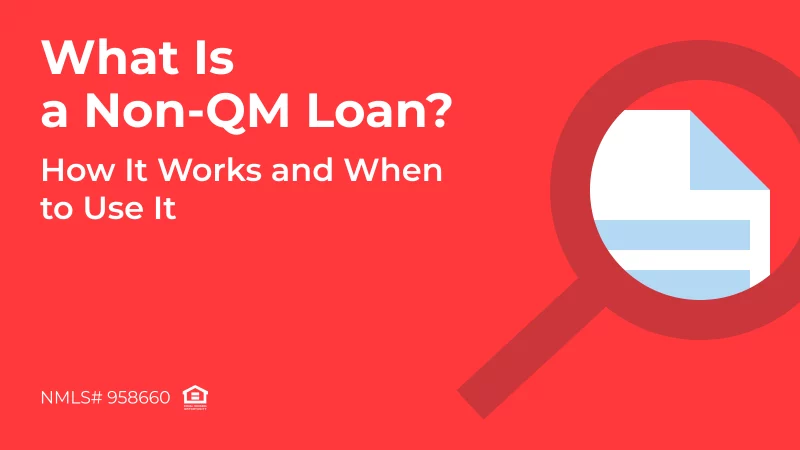But what exactly is a GSE? Why do they matter to brokers, lenders, and homebuyers? Let’s dive into the world of GSEs, exploring their importance, benefits, and what you should know to better serve your clients.
This article was originally published on Mar 3, 2023.
What Are GSEs?
Government-Sponsored Enterprises (GSEs) are financial institutions created by Congress to address specific needs in sectors like housing, agriculture, and education. In the mortgage industry, GSEs are best known for facilitating access to home loans, making it easier for lenders to offer affordable mortgages to a wider range of people.
Get the ADvantage
with our loyalty program
Earn and redeem points for valuable benefits for you and your clients
Unlock RewardsAt their core, GSEs like Fannie Mae, Freddie Mac, and the Federal Home Loan Banks (FHLB) help bridge the gap between lenders and borrowers. They do this by buying mortgages from lenders and turning them into securities that investors can purchase. This process injects more money into the mortgage market, allowing lenders to continue offering loans to new borrowers without taking on too much risk.
In simpler terms, GSEs keep the mortgage market running smoothly. By ensuring that lenders have access to capital, they help make homeownership more accessible to millions of Americans, including those who might otherwise struggle to qualify for a loan.
Why Are GSEs Important for Borrowers?
For borrowers, GSEs offer several important advantages, many of which directly impact their ability to buy a home:
- Lower Interest Rates. By reducing lenders’ risks, GSEs allow them to offer more competitive mortgage rates, which can make a big difference in monthly payments.
- Greater Access to Loans. GSEs provide liquidity to the market, making it easier for lenders to offer loans to borrowers who may not meet traditional lending criteria.
- No PMI (Private Mortgage Insurance). Many GSE-backed loans don’t require PMI, which saves borrowers significant money over time, particularly those with smaller down payments.
- Flexible Terms. From loans with no down payment to refinancing options, GSE-backed loans often come with more flexibility, helping borrowers meet their financial goals while achieving homeownership.
In short, GSEs are a key piece of the puzzle in making mortgages more affordable and accessible to everyday people, especially first-time homebuyers and those with limited financial resources.
Major GSEs in the Mortgage Market
Let’s take a closer look at the key players in the mortgage market and how they work to support both lenders and borrowers.
1. Fannie Mae (Federal National Mortgage Association)
Created in 1938, Fannie Mae is a cornerstone of the U.S. mortgage system. Its primary goal is to make homeownership affordable by purchasing mortgages from lenders, bundling them into mortgage-backed securities (MBS), and selling them to investors. This process allows lenders to keep issuing new loans, maintaining a steady flow of credit for borrowers.
Fannie Mae has been instrumental in helping millions of Americans buy homes, even during economic downturns. In 2024, it remains a crucial player in stabilizing the housing market, offering programs designed to help low- and moderate-income families achieve the dream of homeownership.
2. Freddie Mac (Federal Home Loan Mortgage Corporation)
Established in 1970, Freddie Mac was created to complement Fannie Mae by expanding the secondary mortgage market. Like Fannie Mae, Freddie Mac buys mortgages from lenders, which frees up their capital to issue more loans. Freddie Mac is particularly focused on ensuring liquidity in the market, helping to stabilize it in times of economic uncertainty.
Freddie Mac also supports affordable housing initiatives, making it easier for families across the U.S. to secure a mortgage and, ultimately, a home. With new innovations and a continued focus on accessibility, Freddie Mac remains a key player in the housing finance system.
3. Federal Home Loan Banks (FHLB)
Founded during the Great Depression in 1932, the Federal Home Loan Banks (FHLB) system consists of 11 regional banks that provide liquidity to smaller local lenders. These lenders, which include credit unions and community banks, rely on FHLB advances to finance housing and community development projects.
What sets FHLBs apart is their cooperative structure. Local lenders can join the FHLB system and use its resources to reduce risk while continuing to provide essential services like home loans. This system helps ensure that smaller financial institutions can support their communities, especially in underserved areas.
4. Ginnie Mae (Government National Mortgage Association)
While not technically a GSE, Ginnie Mae (the Government National Mortgage Association) plays a critical role in the mortgage market. Established in 1968, Ginnie Mae ensures that government-backed mortgages—such as FHA, VA, and USDA loans—are available to homebuyers, even during economic downturns. Ginnie Mae guarantees mortgage-backed securities that are composed of federally insured loans, providing a safety net for lenders and making it easier for them to extend credit to borrowers.
Ginnie Mae’s work is crucial in supporting affordable housing initiatives, particularly for veterans, low-income families, and first-time homebuyers. By backing these loans, Ginnie Mae ensures that the housing market remains stable, even when the broader economy faces challenges.
How GSEs Impact Brokers and the Mortgage Market
For mortgage brokers, understanding how GSEs operate can give you a significant advantage. Working with GSE-backed loans not only opens up more options for your clients but also helps you provide better service by securing favorable loan terms and rates.
Enhanced Broker Portal
that makes your job easier
- All operations at your fingertips
- Easy-to-use intuitive interface
- Integrated AI technology
By partnering with lenders that work with Fannie Mae, Freddie Mac, or FHLB, brokers can offer more competitive loans to a wider range of borrowers, including those with lower credit scores or limited down payments. These loans also provide more flexibility in terms of loan structure, refinancing options, and interest rates—ensuring that your clients get the best deal possible.
Looking Ahead: GSEs in 2024 and Beyond
As we navigate through 2024, GSEs will continue to play a pivotal role in maintaining the stability and affordability of the U.S. housing market. While they’ve faced challenges over the years—especially during economic crises—GSEs have proven to be a resilient and essential part of the housing finance system.
In the coming year, Fannie Mae, Freddie Mac, and FHLB will likely continue expanding their programs to make homeownership more accessible, particularly for first-time buyers and those in underserved communities. For brokers, staying up-to-date on GSE-backed loan programs and requirements will be key to offering the best possible service to clients.
Conclusion
GSEs might seem complex, but their mission is simple: to make homeownership accessible for as many people as possible. Whether it’s through lowering interest rates, increasing loan availability, or providing more flexible terms, GSEs are a cornerstone of the U.S. housing market.
For mortgage brokers, understanding how GSEs work and how to leverage their offerings is critical to helping clients achieve their homeownership goals. In 2024, Fannie Mae, Freddie Mac, FHLB, and Ginnie Mae will continue to provide the foundation for a strong and resilient housing market—one that benefits both lenders and borrowers.
By staying informed and working with GSE-backed loans, brokers can ensure that they’re offering the best possible options to their clients, helping more families secure their place in the housing market.
![The ABCs of GSEs: Why Do Brokers Need to Know About Them? [2024 Update] ABC of GSEs](https://admortgage.com/wp-content/uploads/The-ABCs-of-GSEs-1080x1080-0216-680x400.png)


